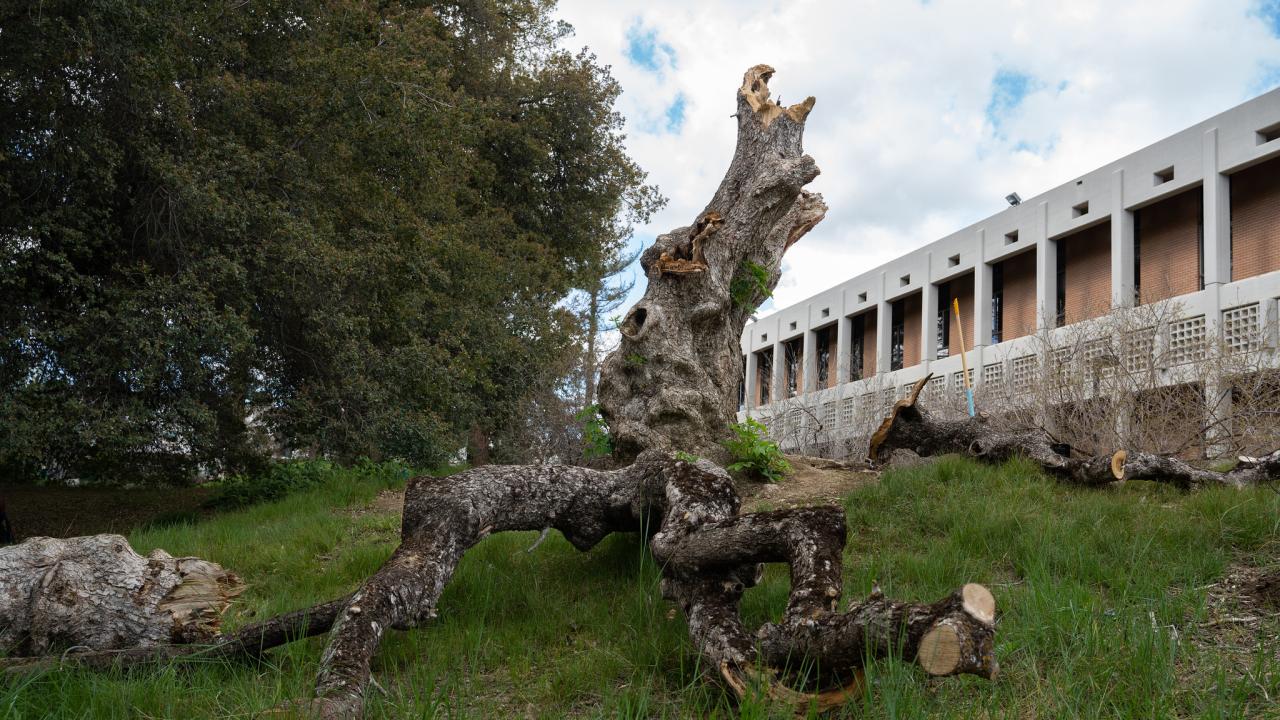
Beautiful California Buckeye Transforms to Natural Sculpture
Trunk remains to provide habitat, 'look after' next generation
A heritage California buckeye (Aesculus californica) trunk in our Native American Contemplative Garden now serves as a natural sculpture and critter habitat.
Celebrating new life
Read the Dateline article on the tree planting held at the Native American Contemplative Garden.
Toward the end of 2021, the 80-year-old tree broke apart, falling victim to old age. Instead of removing the tree completely, Arboretum and Public Garden horticulturists and members of the Committee to Honor the Patwin and Native Americans decided to leave the trunk in place.
"The tree has a very unique and gnarled appearance," said Emily Griswold, director of GATEways horticulture and teaching gardens. "This made it a great fit for "stumpery," the practice of retaining unique trunks in garden design."
"Because the tree was important to the original siting of the garden, we thought there was still a good possibility of it continuing to contribute to the space in its 'afterlife,'" Griswold said.

In addition to being a captivating piece of natural art, the trunk will enrich the natural habitat for animals who make their home in the Arboretum. According to GATEways Horticulturist Rachel Davis, "birds and small mammals can use tree cavities for shelter. Many beneficial insects can also find shelter and nesting opportunities." Committee members and horticulturists also opted to place a few large branches from the original tree throughout the garden to serve a similar purpose.
The large trunk now metaphorically looks after a set of new buckeye saplings propagated on campus from wild-collected seeds and planted during a special ceremony on March 4, 2022.
While branches of the new trees grow up around it, both staff from the Arboretum and Public Garden and committee representatives hope visitors will appreciate this sculptural reminder of the long life of a tree, as well as its symbolic, and environmental importance.
